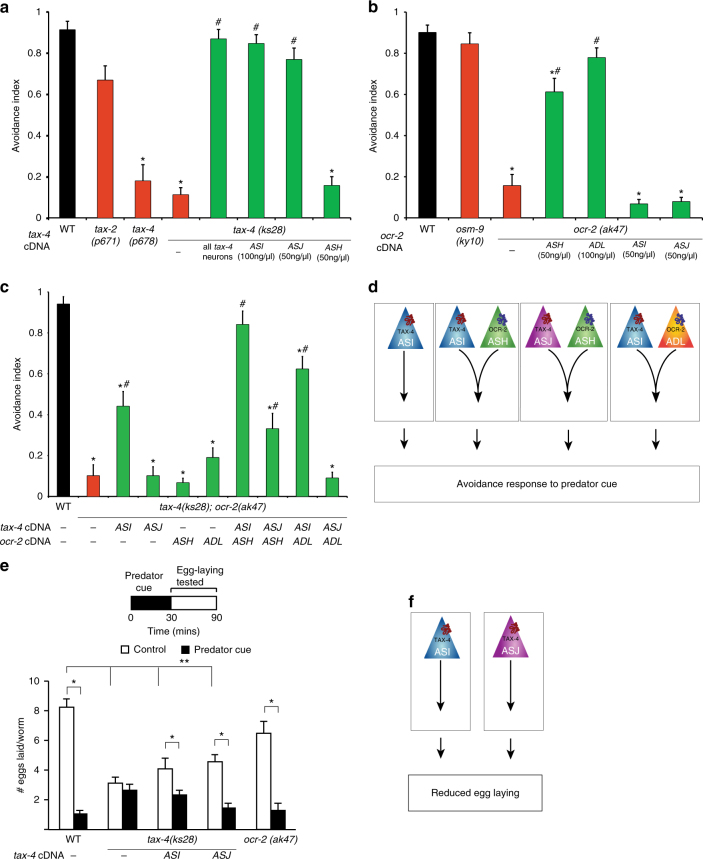Fig. 3.
A redundant C. elegans signaling network enables responses to predator cue. a Mutants lacking the alpha subunit of the CNG channel (tax-4), but not the beta subunit (tax-2), are defective in their response to predator cue. Restoring wild-type tax-4 cDNA using an ASI- or ASJ-specific promoter is sufficient to restore normal behavior to tax-4 mutants. b Mutants lacking the TRPV channel subunit ocr-2, but not osm-9, are defective in their response to predator cue. OCR-2 is specifically required in ASH sensory neurons. c A tax-4;ocr-2 double-mutant is also defective in avoiding predator cue and wild-type behavior is restored when TAX-4 is restored to ASI and OCR-2 is restored to ASH neurons. Restoring TAX-4 to ASJ and OCR-2 to ASH or ADL or restoring TAX-4 to ASI and OCR-2 to ADL is able to partially restore wild-type behavior to the double mutants. Moreover, expressing tax-4 in ASI but not ASJ is sufficient to rescue the double-mutant phenotype. d Schematic showing four redundant pathways (ASI acting independently, ASI and ASH, or ASI and ADL, or ASJ and ASH acting together) driving avoidance to P. pacificus predator cue. e C. elegans egg-laying reduction requires functional TAX-4 signaling in ASI and ASJ neurons. OCR-2 is not required for this behavior. f Schematic showing that TAX-4 acts in ASI and/or ASJ neurons to reduce egg laying upon longer-term exposure to predator cue. Averages and s.e.m. are shown. a–c n = 30 animals and in e, n > 35 tested for each condition, *p < 0.05 compared with controls, #p < 0.05 compared to mutants, **p < 0.05 comparing eggs laid by mutants and wild-type animals obtained using Fisher’s exact t-test with Bonferroni correction

